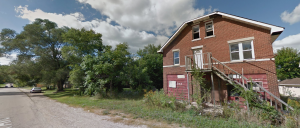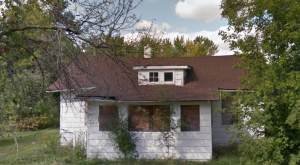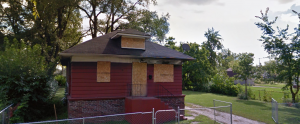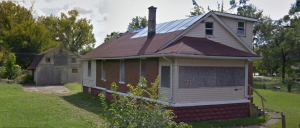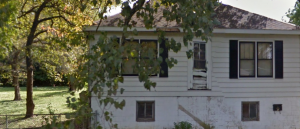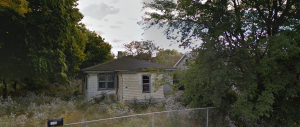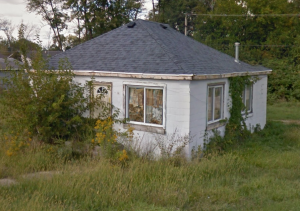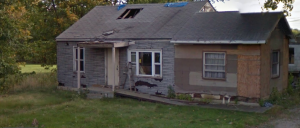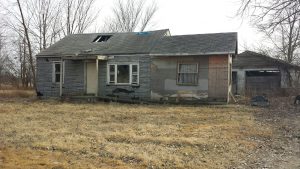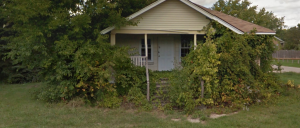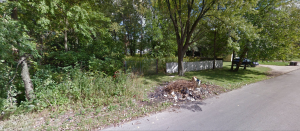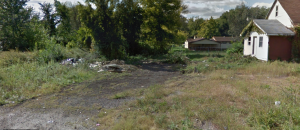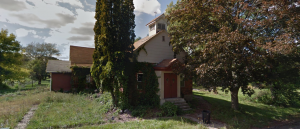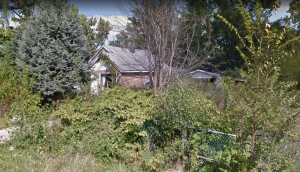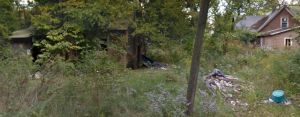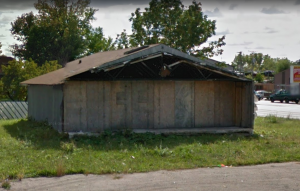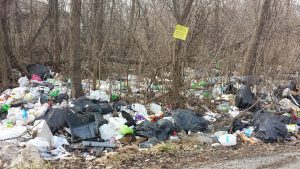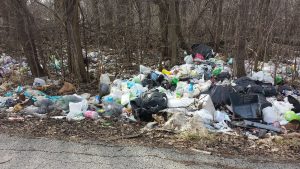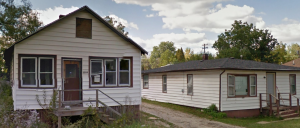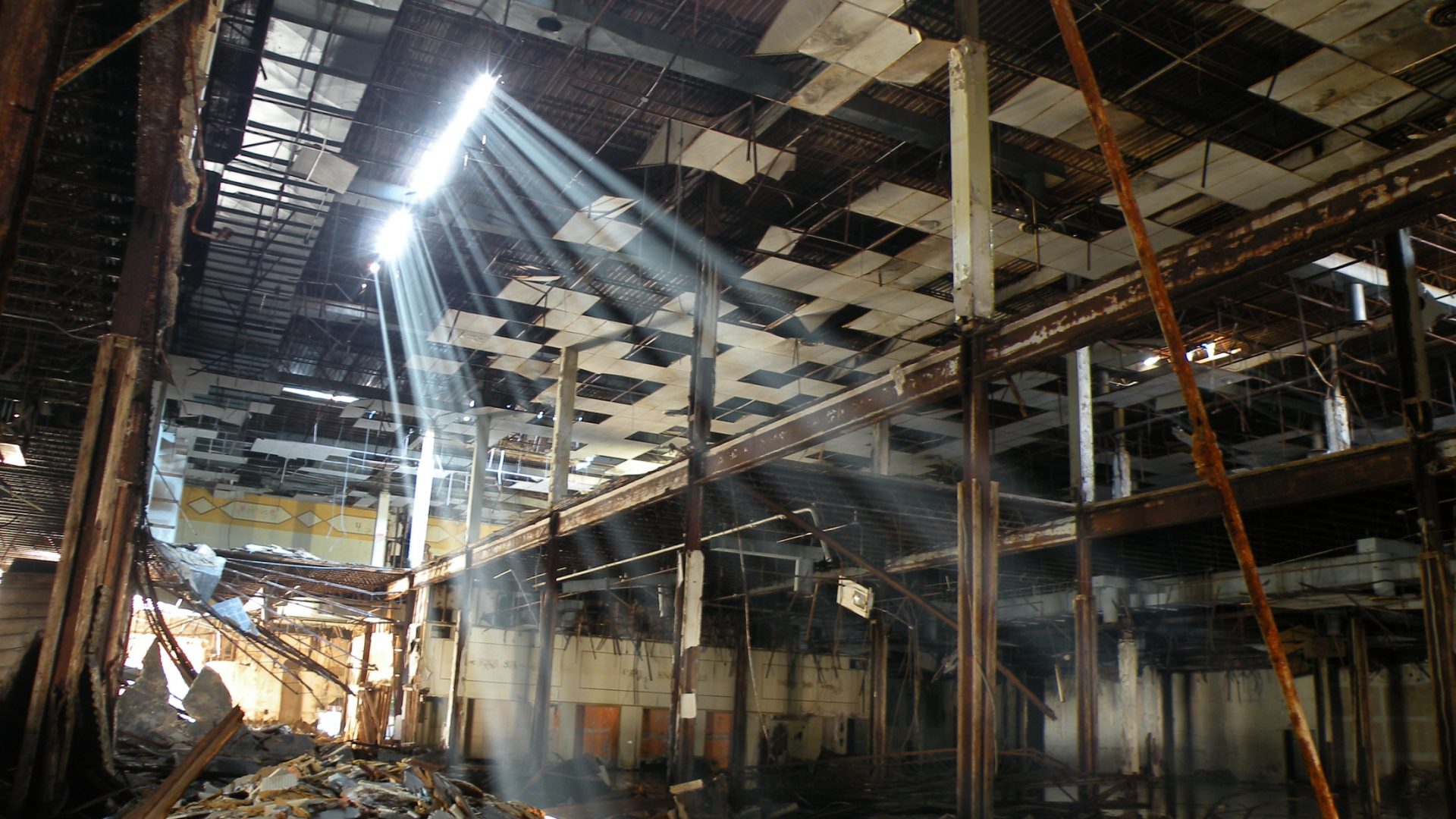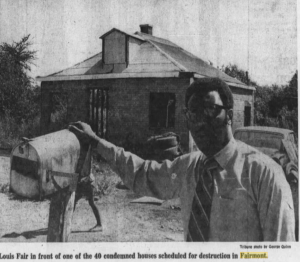| Nicknames | Povertyville, Slumsburg, Mudtown | |
|---|---|---|
| Settled by | Provide info | |
| Year infiltrated | 1982 | |
| Crime impact | Part | |
| Worst areas | Oak Avenue on the north, Rosalind Street on the south, Briggs Street on the east, Illinois Route 171 on the west. A little less rough but still sort of a tough are is Bruce Road on the north, Oak Avenue on the south, Briggs Street on the east, Illinois Route 171 on the west |
|
| Suburban projects | None |

This is an area of Will County that definitely needs recognition on Chicagoganghistory because there has been a blending of unincorporated Lockport Township problems in with Lockport problems as far as gangs, drugs and poverty are concerned. If you visit Chicagogangs.org website and visit their suburb gang list section, you will see Lockport has quite a list of gangs active in that community. I can tell you first hand that the list on Chicagogangs.org for Lockport is not completely correct, and I did not make that list, if I had noticed years ago I would have let the guy that runs the site know that this list for the Village of Lockport is inaccurate. Some of those gangs if not most come out of the “Fairmont” area of supposed Lockport. For example, the list says “Gangster Disciples Rt.171 The Hill.” First of all The Hill is not located in the actual city of Lockport, and that area that is being referred to is, in Fairmont. Most of Fairmont is a world of its own and isolated from everyone else, I shall further explain in depth.
First, let us clarify what the city of Lockport is. The city of Lockport has been a fully incorporated community since 1837 and can boast of having an excellent high school and can also boast as being one of the safest suburbs in the United States. If you see in the Top 100 Safest cities to live in the USA Lockport ranks at number 56 as one of the top 100 safest suburbs in the nation. The city of Lockport has a lot of history as a canal town and has a vintage looking downtown area and has beautiful Delwood Park. The city of Lockport is a working class, middle class and upper middle class community with marvelous older homes and also some brand new subdivisions. The city of Lockport runs as far south as Delwood Park, then after the park Lockport police do not patrol the other side of the park, Lockport firefighters do not provide service there and the Village of Lockport has no services over there accept maybe still water and sewer. The crime rate and any Lockport statistics do not cover south of Delwood Park.
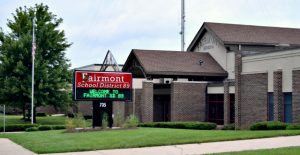
Second, let us clarify what is unincorporated Lockport Township but more formally known as Fairmont. The boundaries for this area are: Del Park Avenue on the north, Rosalind Street on the south, Briggs Street on the east and U.S. Route 171 on the west. Fairmont has no street lights, no garbage pickup (unless you call Will county), has no high school, no street curbs, no proper rainwater drainage system, no police force (residents must call Will County Sheriff), no school bus system to bus Children to Fairmont Elementary School (pictured), no village cleanup system or street sweepers to keep the area tidy, no regulation on upkeep of homes. Fairmont is heavily deprived of village services and has been for many years. The area is very similar to a rural town and functions like one; however, due to neighboring the most dangerous part of Joliet, functioning as a rural town does not suit this area well. Residents of Fairmont are mostly near or below the poverty line and this has been the case for many decades prior. Over the years Fairmont has had many old nicknames that have existed at least since the 1960s or even further back like Povertyville, Slumsburg, Mudtown or The Rural Slum. In more recent years the area is just downright forgotten by many.
Many houses are abandoned and have been for many years in Fairmont. Fairmont has been known to have a very high vacancy rate at least since the 1960s. When one is traveling through Fairmont, you can see several boarded up homes, and some are severely decayed and in need of demolition. Fairmont has several vacant lots where homes used to stand but were torn down eventually, there are also open fields were several acres of property could easily be built if there was ever a desire. Fairmont has pieces of garbage lining the streets in some areas and in some vacant areas there are massive piles of trash that is left by those that cannot afford to pay for Will County refuse services or are just too cheap to use the service. Since there is no local government mandating trash removal services, residents have the option to obtain trash removal and because the area is unincorporated, the services are costly if they even exist. Wild animals attracted to the garbage are a major problem at night as they seek to raid the many piles of garbage. Fairmont School, which is the only school in the area that services K-8, is one of the worst rated schools in the state and is a low budget and impoverished school. Since there is no incorporation in the area and the vast majority of the students fall close to or below the poverty line, there is not much revenue coming into the school, this is why there is no school bus system and children must walk to school which can pose risks to their safety due to the criminal and gang activity in the neighborhood.
Fairmont has several gang members living in the area; however, the crime rate for Fairmont is not very high especially compared to nearby safer suburbs like Romeoville or Crest Hill, but like most troubled suburban areas Fairmont has most of the crime centered in certain areas and when you factor in that crime rate and pin most of it to a smaller area of Fairmont, then the numbers suddenly become alarming, let us break that factor down a little for better a understanding by breaking down Fairmont into sections.
I am classifying Fairmont into three parts so it is understood where most of the gang and criminal activity occurs in this area, because from knowing this area quite well it is like night and day the further north or the further south you get.
Northern Fairmont: This is the area bounded by Del Park Avenue on the north, Bruce Road on the south, Briggs Street on the east and Route 171 on the west. In this section of Fairmont, there is a fairly lower rate of crime and gang activity. There are no boarded up homes and no trash littering the streets. Many residents that live here are middle class and often have well-kept houses, this area very much resembles homes in the incorporated city of Lockport and residents here feel more a part of Lockport.
Central northern Fairmont: This is the area bounded by Bruce Road on the north, Oak Avenue on the south, Briggs Street on the east and Route 171 on the west. This area is a little tougher than beyond Bruce Road but it does not have many board ups and if there are board-ups they are usually not in an extreme state of deterioration. Houses are still fairly well kept and trash on the streets is almost non-existent. Crime is not excessive in this area but there is some trouble that comes around at times and there have been a few murders over the course of the past two decades, at least one of them was gang related.
Central Southern Fairmont: This is the area bounded by Oak Avenue on the north, Reverend Walton Drive on the south, Briggs Street on the east and Route 171 on the west. This area has higher crime and several board-ups. The homes that are occupied tend be fairly well kept. Trash can be found in piles in vacant areas but not so much scattered everywhere. There is crime in this area and the crime is a little higher than normal, but the area is not excessively dangerous. There is gang activity and some violent crime and this section of Fairmont has experienced some murders over time that happened to be gang related.
Southern Fairmont also known as “The Hill” (Lockport Township side): This is the area bounded by Reverend Walton Drive on the north, Rosalind Street on the south, Briggs Street on the east and Route 171 on the west. This is the most dangerous section of Fairmont and is the area where the most crime is committed. There are many abandoned houses that are in a severe state of deterioration. Gangs and drugs are rampant in this area and a lot of land is vacant. Scores of trash can be seen on the streets and vacant lots. Many occupied houses are not well maintained and on the verge of being vacated. Most of the homicides over the years have occurred in this small section of Fairmont and it is the zone where the vast majority of crime happens. This is also a part of the legendary and feared “The Hill” that is partially located in the most dangerous section of Joliet near the Fairview projects. For many years Joliet gangs have wondered into this area to commit crimes to avoid Joliet police, and since they know the Will Country Sheriff will take longer to respond, this area often has become an easier place to commit criminal activity.
It is important to understand exactly where Fairmont is in the Will County area when looking to purchase or rent property in the Lockport area. Realtors will list property in Fairmont as “Lockport” not as a Fairmont property because they technically can do that and should do that, because technically all of Fairmont is a part of Lockport, just not the incorporated city of Lockport, confused yet? It is indeed confusing and can cause a lot of people to move into Fairmont not knowing what they are getting into, it might be cheaper in Fairmont but if you are a buyer or renter, understand you will go without village services, and the further south you move you may have to go without safety. You will be living on the Hill with no street lights!
History of Fairmont
While the city of Lockport continued to grow and the wonderful downtown area continued to develop, the area between Lockport and Joliet stayed mostly vacant until the year 1873 when wealthy businessman Isaac Nobes settled the area and built a lavish mansion at the present day intersection of Nobes Avenue and Route 171 (obviously Nobes Ave was named after him). After Nobes arrived, some others migrated to the area and built larger and interesting homes. The earliest settlers of the area wanted to enjoy the city of Lockport as they pleased but did not want to live among the hustle and bustle of Lockport or Joliet so they isolated themselves in this area and had their own little secret community. There is very little documentation about this area in the 19th century mainly due to the fact that residents were private.
In the year 1892 construction began on the Chicago Sanitary and Ship Canal that attracted many workers of eastern European and Irish decent. The canal was completed by the year 1900 and many of the workers were looking to make the area they had worked in their permanent home, in the Will county sector of the canal construction, former workers settled in Joliet, Romeoville and Lockport and some of them settled in the Fairmont area especially of Russian decent. This is the point in history when Fairmont was platted and was more recognized as being in existence but still residents wanted their own private community which is why besides the platting of land nothing else was official and there were no other historical records of the area during the first 40 years of the 20th century. For the first few decades the only interesting thing about Fairmont was the area’s two Russian cemeteries and a Russian Orthodox Church that was torn down many years ago.
In the 1940s the population began to grow in this area, especially after African Americans began migrating from the southern United States to this area. There were no subdivisions so future residents would pick out a plot of land then either build their own homes with their own two hands or have a crew build their home from scratch. Land prices and taxes were cheap in this unincorporated area which began to be recognized in the 1940s especially after World War II.

In the later 1940s and in the 1950s decade, Fairmont saw its’ most prosperous times. Employment was plentiful in the Joliet area so many newly arriving residents had a steady income being employed in the many Joliet industries. Both white and black residents were settling in the community and homes and businesses were being rapidly built. There were six taverns built and there were four grocery stores that opened in the community. The Fairmont community was racially harmonious between blacks and whites as they shared the same school, stores and restaurants, the only form of segregation was the fact that the migrating southern blacks lived south of Oak Avenue while the whites lived north of Oak Ave. Many of the black families that were moving in made lower incomes than their white neighbors to the north; therefore, the homes south of Oak Ave were designed with lower quality construction techniques and Shotgun style houses (pictured), which are homes that have no hallways. The houses south of Oak Ave were often considered “starter homes,” this would account for the later high rates of deterioration in future decades.
The 1950s were the most prosperous decade for Fairmont as new homes were built and businesses opened. Even though the community lacked many basic village services, residents still enjoyed feeling like they were living in the country and gladly sacrificed sidewalks, public transit, paved roads, public water, sewage lines and other typical village services, residents figured out how to do things on their own such as waste removal and tapping into well water. It was not until the later 1960s that Fairmont’s problems would begin.
By the 1970 census there were about 4,800 residents in Fairmont and over 60% of the population was African American which was caused by many white residents moving out of the community, many of them because they were aging out of the area not because of white flight. By 1970 five of the six taverns had closed their doors and three out of four of the grocery stores had closed down. By that point in time, 800 out of 1,000 homes in Fairmont were declared to be constructed in a substandard fashion. The average income of the area ranged from $5,300 a year to $6,800 at the highest, the poorest being in the southern part of Fairmont according to 1970 stats. In 1969 The Northern Illinois Planning Commission or N.I.P.C had done a drive through of the community and was appalled by conditions and was especially upset about the communities’ lack of public water and sewage lines and was now preparing to do something about it (Chicago Tribune Terri Shultz, January 4, 1970).
As quickly as Fairmont developed and prospered in the 1940s, 1950s and early half of the 1960s, the community quickly declined in the later 1960s and even more so in the 1970s. In the year 1971, the NIPC published a report that stated there were no medical facilities or any clinics. There was only one grocery store and one tavern for the whole area. 23% of the population was unemployed according to the report, and 20% of homes had no running water (Chicago Tribune Section 4A, September 6, 1973). Some residents hiked as much as a mile to get to the nearest well for water, and many of the wells were contaminated with serious strains of bacteria. Many residents drilled their own water wells which was also not a good idea due to contamination. Many residents used outhouses because of the lack of sewage and running water, it was like Fairmont was trapped in a time capsule in the distant past set back almost 100 years. The community was littered with 150 abandoned cars that lined the streets as children played in them. When it rained the stench of raw sewage filled the air, all these conditions were noted in the NIPC report in 1971 which prompted immediate action. By 1973, half of the abandoned vehicles were towed away, while 40 of the abandoned homes were slated for demolition. Construction began to add sewer and water pipelines but these projects would take years to complete. A public bus route was added to allow residents with no vehicle to get out of Fairmont for any needs; there were also now hopes that Joliet or Lockport would annex this community (Chicago Tribune Section 4A, September 6, 1973).
By the year 1978, the sewage and water lines that were connected to the city of Lockport were completed and now residents had public running water and proper sewage lines, but some residents still kept using well water which was a practice not completely stopped until 1986 when Fairmont built their own water tower which provided well water while the city of Lockport provided the sewage services.
During the 1970s decades older residents in the community continued to move out, primarily white residents, once again not because of white flight but because of aging out of the community; however, older black residents remained in the area. The racial border was shifting further north as more black families moved north of Oak Avenue all the way up to Bruce Road into slightly better homes. Property values were declining due to shoddy workmanship on some of the homes and this brought the ability for lower income residents to move in many of them unemployed. The old Nobes mansion had been divided into apartments after the Nobes family sold it, and became the only apartment building in the community but the building failed Will county codes in the 1970s and was torn down along with most other 19th century homes that had fallen into severe deterioration. Despite the efforts in the 1970s to help clean up Fairmont the mounting rate of poverty and constantly vacated homes kept rising especially by the late 1970s when unemployment skyrocketed in the Joliet area after the collapse of many industries, Fairmont, especially the southern part would fall into a slum, worse than ever.
In the late 1970s, black and white flight became a major phenomenon in Fairmont after the Joliet industries collapsed, residents that had the financial means and transportation means to move out and find new employment in other areas surely did that in the late 1970s and early 1980s. The residents that moved had some skills still useful to find other employment and had the means to move, those that remained had old skills that were now no longer needed, and many also had no means of transportation to find employment far away. Many new residents settling the area were unemployed and received social security income and other government assistance such as section 8 which meant their income was far below the poverty line.
As if Fairmont could not deteriorate more, it surely did in the 1980s and now a new problem came to this unincorporated area, street gangs wondering in from the nearby Forest Park neighborhood in Joliet. Starting in 1982 Joliet began to experience the surge of Chicago based Street gangs and within no time the Fairview public housing projects that were within walking distance from southern and central Fairmont were soon filled with gang activity that became extremely deadly by 1983. The Black Gangster Disciples and Conservative Vice Lords controlled the streets of the Forest Park neighborhood and it took the gangs no time to figure out that Fairmont had no municipal police force and was unincorporated; therefore, they could wonder into the neighborhood to sell drugs and break into homes. Gang members also found abandoned homes to be ideal for gang meetings, drug and weapons stashing and for operating crack houses, the garages at the abandoned sites were ideal to hide stolen cars, these practices began in the 1980s and continued even up to present day.
The city of Joliet developed growing concerns about gangs wondering into Fairmont and making their way onto Route 171 which could ease drug trafficking and other criminal activities; therefore, the county decided to put in a guard rail around Rosalind Street that sealed off through traffic down Green Garden Street, Englewood Ave, Luther Ave and Fairmont Ave, and since Amherst Ave, Bradford Court and Sheffield Court already did not go through into Joliet the only ways to cross by vehicle from Joliet into Fairmont would be California Ave, Arthur Ave and Fairview Ave. This issue caused an uproar among east Joliet and Fairmont residents as they formed a protest group called J.A.C.O.B due to the fact that residents feared it would cause difficulty of emergency vehicles to pass through because of “The Rail” as it was called, their efforts fell on deaf ears and the rail was put in anyway and the streets were capped off that led to them.
In the early 1990s, gang wars and drug trafficking became a major problem in the Forest Park neighborhood in Joliet and now the warfare and trafficking spilled over into Fairmont especially since the south side of the community was a part of The Hill. The Hill nickname for the Fairmont section originated in the 1980s when residents around the area began referring to “Riley’s Hill” which referred to the high slope around Riley Avenue by Route 171, which can cause debate that The Hill actually starts at Riley Avenue and continues into Joliet but all of the gang and drug activity for The Hill has been connected between the streets of the Forest Park neighborhood of Joliet up to Reverand Walton Drive in Fairmont.
In the year 1992, the Gangster Disciples began running a 2 kilo of cocaine sales a week drug operation on The Hill and they were ready to gun down any Vice Lord or Latin King opposition to this highly profitable drug operation. Mexican migration was increasing in Fairmont beginning in the early 1990s and among the migration came members of the Latin Kings that operated north of Reverand Walton Drive and usually north of Oak Ave, regardless of them not operating directly on The Hill they still battled with Gangster Disciples on The Hill.
The battle for The Hill and the fact that many Gangster Disciple gang members were moving into Fairmont was bringing outside violence into the Fairmont area, Vice Lord gang members were also taking up residence in the area and it was causing gang conflicts and shootings in Fairmont but mainly from rivals coming in from the outside.
On June 21, 1994 Unknown Vice Lord gang member Major Love, then 17 or 18 years old, ventured into Fairmont with the mission to kill another Vice Lord gang member at his own home. Love knocked after midnight on the door at 2106 Arthur Ave to the Sutton residence and once Othella Sutton answered the door Love asked to speak to Sutton’s son but then fired six bullets into the 61 year old retired iron worker killing him instantly (Chicago Tribune Tim Tierney, January 2, 1995). Major Love was convicted and sentenced until 2014 for the murder. This was an example of how brutal the Fairmont area was becoming, the Suttons’ house had been shot at before the death of Othella Sutton, as did many homes on The Hill.
Even though gangs like Vice Lords and Latin Kings had some settlement and activity in Fairmont, the area was mainly controlled by the Gangster Disciples, especially on The Hill. In the wake of the big 1996 crack downs of the top leadership of the Gangster Disciples between 1995 and 1996, internal strife developed between GD groups and this was apparent in April of 1996 when a motorist driving down the rural part of Oak Ave stopped at 4:30 A.M. to find three dead bodies. All three men were shot execution style in the back of the head in the middle of the road with the third man in a nearby ditch. Two of the men were identified as Gangster Disciple gang members from Chicago while the other man was not in a gang. Police alleged that these three men were visiting someone they knew in Joliet that night for possibly the purposes of drugs and somehow they ended up executed on a rural road near Oak Ave and Farrell Road which is just barely outside the Fairmont borders. Police were not sure of the motive for murder but heavily suspected internal gang disputes between GD members. A resident of Fairmont came forward saying a strange man in a blue car was pounding on her door after midnight that night but she would not answer it, could it have been the killer? The two Gangster Disciple gang members were not documented hard core members but authorities suspected there may have been a link between the two and some recently incarcerated high ranking members in the Gangster Disciples that were recently taken down in Operation Headache (Chicago Tribune Andrew Martin and Tim Tierney, April 2, 1996).
Another horrific murder occurred on January 29, 1997 at 201 North Avenue in the more northern part of Fairmont. This house had been operating as a crack house for a while. The crack house was being operated by Black P Stone gang members, more specifically Jermaine Norris who was a Joliet Black P Stone. Norris became upset when Loren “Chub” Clayton was not paying back a debt owed to Norris, so Norris planned a vicious attack on Clayton and anyone else that was there, he planned this attack with Lorenzo Payton and another man. The three men came to the house and attacked a 16 year old teenager and two men and two women. The men tied all five of them up with duct tape then proceeded to cut the two older men’s throats open. One of the women suffocated to death from the way she was gaged. The 16 year old boy that just so happened to be the brother of Loren “Chub” Clayton, broke free and escaped to a neighbor’s house and called police. Norris and Payton became fugitives running from state to state for months until they were finally brought down. The third man was never caught or even named for the crime because Norris would not cooperate and Payton must not have known him. The third man did cut one of the men’s throats that ended up surviving. The only one that died was the woman that died of suffocation, and Payton testified against Norris saying he planned the whole thing and was the murderer (Chicago Tribune William Presecky, December 10, 1999). Norris is still incarcerated for this murder and is not up for parole until 2069.
In 1997, Joliet police did a major sting of the Gangster Disciple drug operation on The Hill which severely crippled the 2 kilo a week cocaine operation on The Hill that happened partially in Joliet and in Fairmont. Many of the members arrested had Lockport Township addresses, showing that many GDs liked to take up residence in this unincorporated area (Chicago Tribune Rachel Melcer, October 1, 1997). The taking down of this drug operation helped slow down the gang violence and gang activity in the Fairmont area, but problems still continued in Fairmont that did not slow down until the mid-2000s decade.
There is still heavy crime on The Hill and still major problems with garbage and abandoned homes in the community, making this area a severely blighted area with shuttered homes that have been abandoned for many years. Poverty still runs rampant in this area but on a positive note many old houses have been rehabbed which has brought some higher income residents.
Some of the same unincorporated woes still plague this community such as flooding because of the lack of curbs and a drainage system, but the area has improved since past years.
Most images below are of vacant properties. Most images are courtesy of Google Maps. Some I took myself
